If yo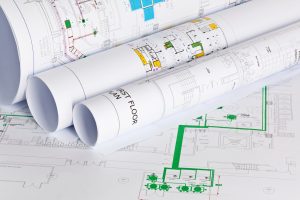 u live in the city, water for your plumbing system likely arrives via municipal water lines. But our part of the world has a lot of rural homes, and in those cases, other options must be found. Without a reservoir or standing water supply nearby, your best option is usually drilling for well water, then setting up the proper lines and connections to your home. That’s a complicated and potentially difficult process, though the results can give your home the fresh water and reliable self-sufficiency that homes in our part of the world sometimes require. In those cases, you want to make sure you contact the right plumbing service to handle the job the right day.
u live in the city, water for your plumbing system likely arrives via municipal water lines. But our part of the world has a lot of rural homes, and in those cases, other options must be found. Without a reservoir or standing water supply nearby, your best option is usually drilling for well water, then setting up the proper lines and connections to your home. That’s a complicated and potentially difficult process, though the results can give your home the fresh water and reliable self-sufficiency that homes in our part of the world sometimes require. In those cases, you want to make sure you contact the right plumbing service to handle the job the right day.
Finding the Spot
Unless there’s surface water visible, drilling for a well means finding the location of any underground water on your property (or nearby if you belong to a water-sharing collective). That means taking a careful survey of the land to find potential spots. This can be aided immeasurably by using computerized surveying equipment, which can detect the presence of groundwater with uncanny accuracy and show you just where to dig. It can also determine the depth of the dig needed to reach it and other such information which allows you to make proper plans with all the details in place.
The Dig
The dig itself utilizes a drill, which must be rented as part of the process. Dig times may vary, depending on the depth of the well and the type of rock in the ground above it. Once the well is dug, the technicians will examine it carefully to determine the well’s depth (a simple matter of using a measuring line in most cases) and yield (the amount of gallons per minute it can deliver), as well as seeing how far the water level dropped and how quickly it was restored to its original level. The water itself will be tested to ensure their no contaminants or other concerns, and the well will be capped.
The Lines
Once the well is dug, lines themselves need to be run from your new well to any homes that intend to make use of it. In many cases, that will include the installation of water purifiers, water softeners, and other devices designed to keep impurities out of your home’s water supply. Those devices will need to be periodically serviced and tested so that they continue to function efficiently. Furthermore, the well itself will need to be regularly tested for the presence of bacteria or contaminants that may not have been present the when you initially dug for the well.
With the right team on your side, your new well can be dug and provide service to you and your family for generations. The friendly pros at D’Spain Sales & Service Inc. can perform well drilling and well water testing in Bandera, TX, as well as provide a host of related plumbing services. Call on us today and let us show you what we can do.
Continue Reading
Tags: Bandera, Plumbing, Water Well
Posted in Water Well | Comments Off on Contact the Right Service for Water Well Drilling
 We handle a lot of well services for local clients who live in rural areas. Private wells or shared wells make an excellent means of providing safe potable water from a home that might otherwise struggle with its water supply. Private wells can also be used to provide irrigation, either for farming or simply to provide the greenery in your yard with sprinkler water. Either way, that might mean digging a specific well, called an irrigation well on your property. A trained expert is absolutely necessary when planning and conducting such an operation.
We handle a lot of well services for local clients who live in rural areas. Private wells or shared wells make an excellent means of providing safe potable water from a home that might otherwise struggle with its water supply. Private wells can also be used to provide irrigation, either for farming or simply to provide the greenery in your yard with sprinkler water. Either way, that might mean digging a specific well, called an irrigation well on your property. A trained expert is absolutely necessary when planning and conducting such an operation. 
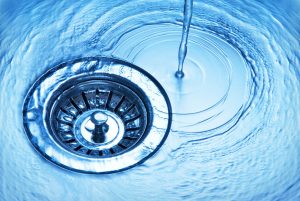 If you live in a city, your water is handled by a municipal water service, which takes care of safety issues like contamination and bacterial infection. If you live in the country, however – and a number of people in the area do – then you need to rely on alternative water supplies. This can often involve a well, either one dug directly on your property or a communal well which you share with a number of other households.
If you live in a city, your water is handled by a municipal water service, which takes care of safety issues like contamination and bacterial infection. If you live in the country, however – and a number of people in the area do – then you need to rely on alternative water supplies. This can often involve a well, either one dug directly on your property or a communal well which you share with a number of other households.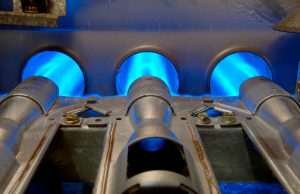 Winters are fairly mild in our neck of the woods, but our heating systems still get called into use on a regular basis. If your heater is on its last legs, you may need to get it replaced before the spring. That can lead to a bit of a scramble as you work to get your new heater put in before the next cold front arrives. That doesn’t mean, however, that you should skimp on the necessary steps toward ensuring that your new heating system is working exactly the way it should.
Winters are fairly mild in our neck of the woods, but our heating systems still get called into use on a regular basis. If your heater is on its last legs, you may need to get it replaced before the spring. That can lead to a bit of a scramble as you work to get your new heater put in before the next cold front arrives. That doesn’t mean, however, that you should skimp on the necessary steps toward ensuring that your new heating system is working exactly the way it should. u live in the city, water for your plumbing system likely arrives via municipal water lines. But our part of the world has a lot of rural homes, and in those cases, other options must be found. Without a reservoir or standing water supply nearby, your best option is usually
u live in the city, water for your plumbing system likely arrives via municipal water lines. But our part of the world has a lot of rural homes, and in those cases, other options must be found. Without a reservoir or standing water supply nearby, your best option is usually  We pride ourselves on our self-reliance here in Texas, especially in the country where people are used to doing things themselves. That tendency should never extend to electrical wiring, however. Whether you’re replacing an electrical outlet or running a new length of wire, it always pays to hire an electrician to do the job the right way. Why? There are a number of very strong reasons.
We pride ourselves on our self-reliance here in Texas, especially in the country where people are used to doing things themselves. That tendency should never extend to electrical wiring, however. Whether you’re replacing an electrical outlet or running a new length of wire, it always pays to hire an electrician to do the job the right way. Why? There are a number of very strong reasons. 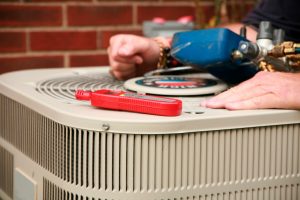 Winter is all but here, with cold temperatures in the forecast for the foreseeable future. That means your air conditioning system is probably the last thing on your agenda right now, shelved in favor of focusing on your heating system and other components to your home pertinent to wintertime comfort.
Winter is all but here, with cold temperatures in the forecast for the foreseeable future. That means your air conditioning system is probably the last thing on your agenda right now, shelved in favor of focusing on your heating system and other components to your home pertinent to wintertime comfort.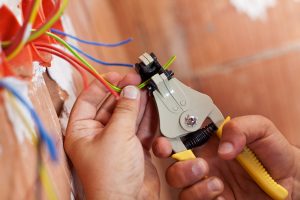 Your home’s electrical system is arguably the most important part of it. Without it, modern life simply isn’t possible, as it’s required for everything from lights to heat to your computer system to your water heater and everything in between. When problems arise, it’s not just a matter of comfort or luxury. It can bring you home to a standstill, and possibly even create a safety issue as well.
Your home’s electrical system is arguably the most important part of it. Without it, modern life simply isn’t possible, as it’s required for everything from lights to heat to your computer system to your water heater and everything in between. When problems arise, it’s not just a matter of comfort or luxury. It can bring you home to a standstill, and possibly even create a safety issue as well. 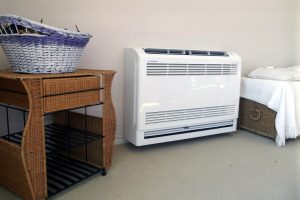 Most homes in the area rely on centralized heating of some kind or another, which heats the air in a single location and then distributes it through the home with a system of ducts. It’s inexpensive and effective, which makes it a great option for most homes. Some homes, however, can’t support the ducts required, either because their architecture is unique in some way, or simply because they were built before air conditioning was available and thus can’t support a system of ducts.
Most homes in the area rely on centralized heating of some kind or another, which heats the air in a single location and then distributes it through the home with a system of ducts. It’s inexpensive and effective, which makes it a great option for most homes. Some homes, however, can’t support the ducts required, either because their architecture is unique in some way, or simply because they were built before air conditioning was available and thus can’t support a system of ducts. 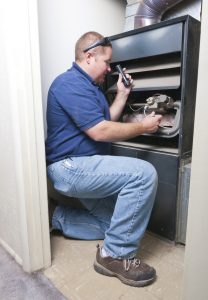 Heating season has officially arrived, and that means you’ll be running your furnace or your boiler on a regular basis between now and spring. If your system runs into problems, you’re going to want to spot it sooner rather than later. Spotting an issue now and getting it addressed with a repair session from a trained technician can save you money and effort, especially when compared to getting caught flat-footed with a breakdown in the middle of the coldest day of winter.
Heating season has officially arrived, and that means you’ll be running your furnace or your boiler on a regular basis between now and spring. If your system runs into problems, you’re going to want to spot it sooner rather than later. Spotting an issue now and getting it addressed with a repair session from a trained technician can save you money and effort, especially when compared to getting caught flat-footed with a breakdown in the middle of the coldest day of winter. 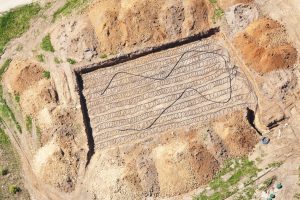 Traditional heating and cooling systems tend to follow a few well-defined models: blowing heated or cools air through ducts into your home, for example, or boilers that use steam or heated water to provide warmth for the home. They’re popular and efficient systems and if your home has such a system, there’s no need to change it. (We don’t believe in fixing what isn’t broke around here.)
Traditional heating and cooling systems tend to follow a few well-defined models: blowing heated or cools air through ducts into your home, for example, or boilers that use steam or heated water to provide warmth for the home. They’re popular and efficient systems and if your home has such a system, there’s no need to change it. (We don’t believe in fixing what isn’t broke around here.) 













